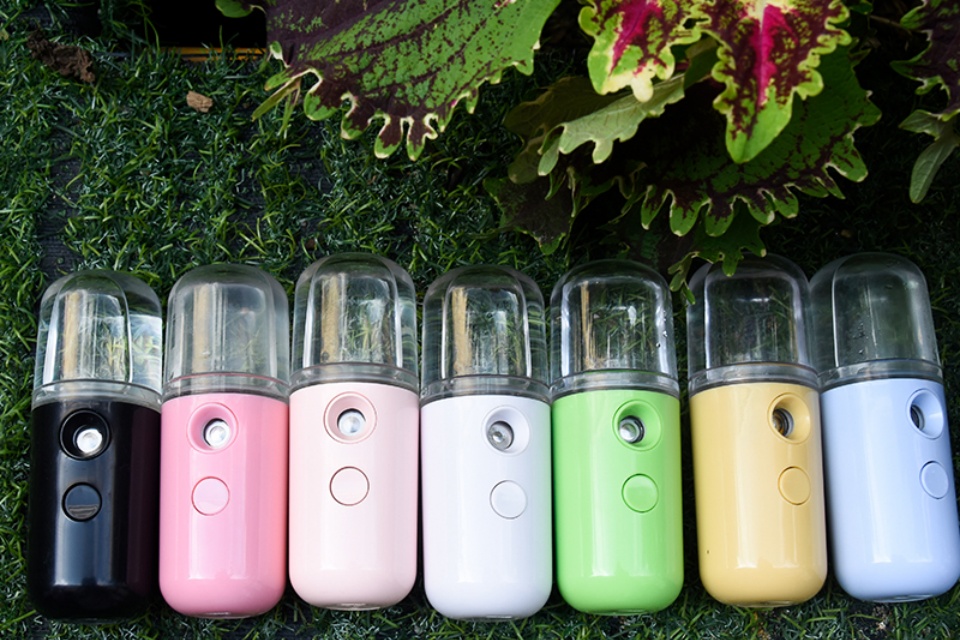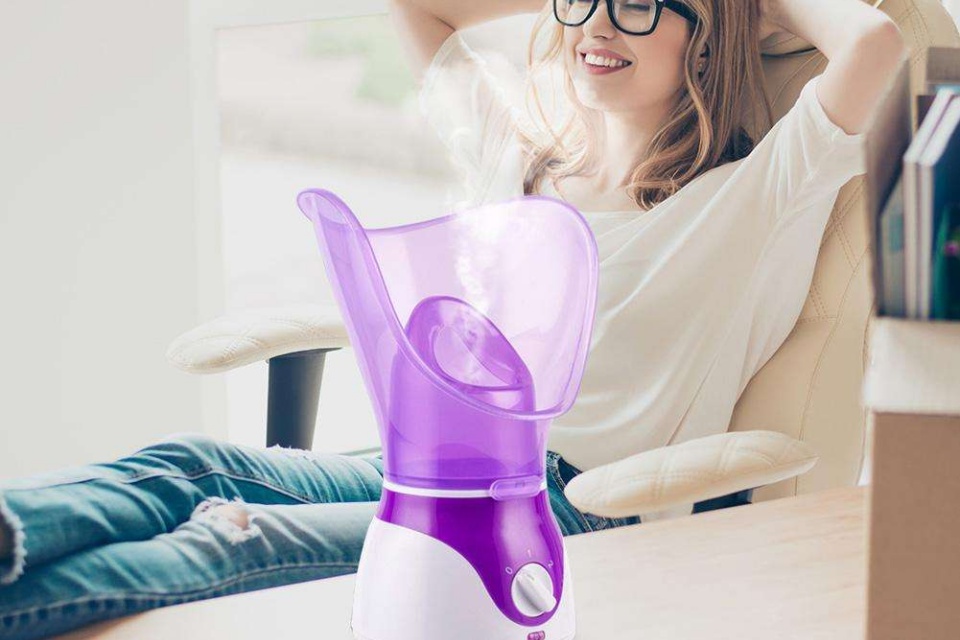Steam Before Masks Prep And Timing Explained
Summary
Steam therapy, an ancient practice rooted in various cultural traditions, has gained contemporary recognition for its numerous health and wellness benefits. Historically, steam bathing was not only a means of relaxation but also a vital component of communal and healing rituals, from the sudatoriums of the Roman Empire to modern adaptations in urban South Africa. Today, steam therapy is celebrated for its therapeutic properties, including improved respiratory function, enhanced skin health, and emotional well-being, making it a popular addition to modern skincare routines.
The mechanisms of steam therapy involve the inhalation of humidified air, which helps clear respiratory congestion and promotes better lung function. Additionally, the application of steam to the face aids in opening pores, allowing for deeper penetration of skincare products. The practice is particularly effective when paired with facial masks, which can further enhance hydration and overall skin vitality. For optimal results, it is recommended to steam for about 8 to 10 minutes and to incorporate steaming into a regular skincare regimen, typically once a week.
While steam therapy is widely lauded for its benefits, it is essential to tailor the process to individual skin types and conditions to avoid irritation. Preparations before steaming, such as cleansing and hydration, as well as mindful application of subsequent skincare products, play a crucial role in maximizing the effects of steam. Notably, individuals with sensitive skin or specific conditions like rosacea may need to approach steaming with caution to prevent adverse reactions.
The practice of steam therapy reflects an enduring appeal that marries ancient wisdom with modern wellness trends, highlighting its versatility and capacity to address various health concerns. As steam therapy continues to evolve, it underscores the importance of holistic approaches to health and skincare, fostering deeper connections between traditional practices and contemporary self-care methodologies.
Historical Context
Steam therapy, a practice that has evolved over centuries, has deep roots in various cultures worldwide. Its origins can be traced back to ancient civilizations, where steam baths served not only as a means of relaxation but also as crucial components of social and healing rituals. For instance, during the Roman Empire, large steam houses known as sudatoriums were constructed, which facilitated communal socializing while enjoying the benefits of steam. This cultural significance of steam bathing highlights its role in fostering community bonds and wellness.
In South Africa, particularly in Johannesburg, the practice of steam bathing has been revitalized by migrants from neighboring countries in the post-apartheid era. Participants engage in collective steam sessions that blend African and Christian traditions, addressing various material and metaphysical challenges of urban life. This contemporary form of steam therapy serves as a coping mechanism for many migrants navigating the uncertainties and dangers of city life, often referred to as a "space of transition" by scholars.
The therapeutic properties of steam have been recognized for centuries, being utilized to alleviate ailments such as arthritis, rheumatism, and muscle spasms across different cultures. Steam therapy has maintained its relevance through the ages, adapting to modern wellness practices while preserving its historical roots. This enduring appeal underscores the belief in the healing potential of steam, making it an integral aspect of both traditional and contemporary health rituals.
Moreover, the cultural adaptations of steam therapy in various contexts reveal its flexibility and capacity to address the unique challenges faced by different communities. The blending of ancient rituals with modern therapeutic practices demonstrates the resilience of steam therapy as a vital form of holistic healing that continues to thrive in today's society.
The Science Behind Steam
Steam therapy has a long-standing history and a wealth of health benefits, combining ancient practices with modern wellness techniques. The act of exposing the body to steam is believed to facilitate detoxification and improve overall well-being, with scientific backing for many of its purported advantages.
Mechanism of Action
The physiological effects of steam on the body are multifaceted. When inhaled, steam can enhance respiratory function by reducing pulmonary congestion and improving mucociliary clearance, which is vital for maintaining clear airways. Studies indicate that the inhalation of humidified air can lighten respiratory tract secretions and relieve symptoms associated with conditions like bronchitis and sinusitis. Additionally, steam therapy has been shown to increase tidal volume and vital capacity, leading to better ventilation and airflow in the lungs.
Benefits for Skin Health
Steam therapy also provides numerous benefits for the skin. The heat generated during steam sessions promotes circulation, which can lead to a healthier, more vibrant complexion. As the steam opens pores, it facilitates the release of trapped sebum and acne-causing bacteria, helping to cleanse the skin. Over time, consistent steam exposure can yield both immediate effects—such as visibly cleaner pores and reduced redness—and long-term improvements in skin hydration and texture.
Emotional and Mental Well-being
The psychological benefits of steam therapy are significant as well. The heat from steam can stimulate the release of endorphins and serotonin, neurotransmitters that are known to improve mood and alleviate stress. This hormonal response not only contributes to an enhanced feeling of well-being but also aids in reducing symptoms of anxiety and depression. The rhythmic nature of steam therapy rituals may allow individuals to access deeper states of relaxation and mental clarity, promoting a sense of peace and tranquility.
Traditional Practices and Modern Adaptations
Historically, cultures such as the ancient Romans, Greeks, and various indigenous groups have utilized steam bathing for health and spiritual purposes. The practice continues to evolve, with contemporary wellness brands integrating technology to make steam therapy more accessible. Innovations such as portable saunas have allowed individuals to incorporate steam into their daily routines, amplifying its benefits for physical, mental, and emotional health.
Preparation for Steam Before Masks
Before incorporating steam into your skincare routine, it's essential to consider your skin type, as this will determine the most effective application of facial masks in relation to steaming. For dry skin, it's advisable to apply a moisturizing mask prior to steaming, while those with oily skin should steam first, then cleanse, dry, and follow up with a mask afterward. Additionally, sheet masks and overnight masks should be applied after a steaming session for optimal results.
Steps for Effective Steaming
Initial Cleansing
Start your skincare ritual by cleansing your face thoroughly with a gentle cleanser to remove makeup, dirt, and sunscreen. This step is crucial to ensure that the steam can effectively penetrate the skin.
Hydration
It's also important to hydrate before steaming. Drink a glass of water to prepare your skin and body for the process. Rehydrating after your steam session is equally vital to maintain skin moisture.
Steaming Methods
There are two primary methods for steaming your face at home. The first involves soaking clean towels in hot water, wringing them out, and applying them to your face after they have cooled slightly. The second method entails boiling water in a pot, turning off the heat, and positioning your face over the pot with a clean towel draped over your head to trap the steam. Both techniques can be utilized for a minute or two, but caution is advised to prevent overexposure, which can lead to skin irritation.
Post-Steaming Care
After steaming, apply your chosen mask or other skincare products such as serums. The steam helps open pores and increases the skin's permeability, allowing for better absorption of these products. Follow this with a moisturizer suitable for your skin type—lighter, gel-based formulas are recommended for oily skin, while creamier options are best for dry skin.
Timing and Application
Facial steaming is an important preparatory step in skincare routines, particularly before applying masks. The process typically involves using steam to open up the pores, making the skin more receptive to subsequent treatments.
Duration of Steam Application
For optimal results, it is generally recommended to steam the face for about 8 to 10 minutes. This duration is sufficient for most individuals to experience the benefits of steaming without causing excessive irritation or dehydration of the skin. It is advisable to start by checking the skin after three minutes of steaming to ensure there is no adverse reaction to the heat. If the skin appears to handle it well, the session can continue until the recommended time is reached.
Frequency of Facial Steaming
While steaming can enhance skin hydration and improve the effectiveness of facial masks, it should not be overdone. For best results, steaming should be performed about once a week. Overuse may lead to irritation or dryness, as excessive heat can strip the skin of its natural moisture.
Preparing for Facial Steam
Before beginning a facial steam session, it is important to prepare the skin adequately. Starting with a clean face is crucial, as this helps to remove any dirt or makeup that may block the steam's benefits. Additionally, ensuring that the steaming area is safe and comfortable will contribute to a more effective experience.
Application of Masks Post-Steam
After steaming, the skin is primed for mask application. This is an ideal time to use hydrating or treatment masks, as the open pores allow for deeper penetration of the mask's ingredients. Following the steaming process with a mask can amplify its effects, providing a significant boost to the skin's overall health and appearance.
Benefits of Steam on the Skin
Steam therapy offers numerous benefits for skin health, making it a popular addition to skincare routines.
Hydration and Skin Nourishment
One of the primary advantages of steam is its ability to enhance skin hydration. The heat generated in a steam room increases the body's sweat response, helping to flush out toxins and impurities from the skin's surface. This process can nourish and hydrate the outer epidermis, which is crucial for maintaining a protective barrier against environmental irritants and pollutants. Regular steam sessions can keep this protective layer moisturized, preventing excessive dryness and damage.
Improved Circulation
Steam exposure promotes better circulation within the skin. The warmth dilates blood vessels, leading to increased blood and oxygen flow to the skin's surface. This enhanced circulation provides vital nutrients to skin cells, contributing to a healthier and more radiant complexion. As a result, steam can play a significant role in improving skin tone and texture, while also supporting overall skin vitality.
Enhanced Product Absorption
Facial steaming increases skin permeability, allowing for better absorption of skincare products. By softening the outer layer of skin and loosening trapped debris, steam makes it easier to cleanse the skin and prepare it for subsequent treatments. This means that products applied after steaming, such as serums and moisturizers, can penetrate more effectively, maximizing their benefits. The optimal order of application involves using lighter serums first, followed by heavier creams to ensure efficient absorption.
Cleansing and Detoxification
Steam acts as a natural cleanser for the skin. It helps to unclog pores by loosening dirt, oil, and dead skin cells that may lead to breakouts or dullness. Regular steaming can prevent the buildup of impurities, supporting clearer and healthier skin. Additionally, the detoxifying effects of steam may aid in reducing skin issues such as acne and blackheads by facilitating the removal of blockages within pores.
Skin Type Versatility
Facial steaming is beneficial for various skin types, including oily, dry, and sensitive skin. By adjusting the steaming process or incorporating botanical additions, such as chamomile or lavender, individuals can customize their steaming experience to meet specific skincare needs. However, it is important to note that those with certain skin conditions, like rosacea or eczema, should approach steaming with caution.
 English
English Español
Español Português
Português Pусский
Pусский Français
Français Deutsch
Deutsch 日本語
日本語 한국어
한국어 Italiano
Italiano عربى
عربى


